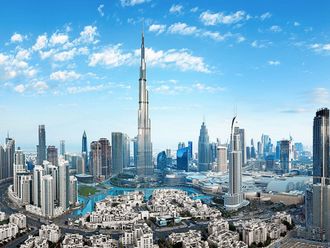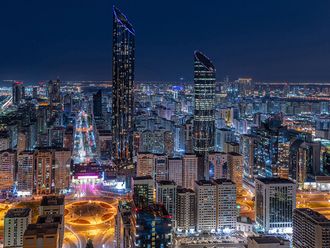It is clear that various countries in the world are busy ensuring the future of their energy supply by considering available sources from the traditional to the complex and highly advanced to drive their economies. But economic growth always has side effects — especially with respect to the environment. Therefore, it is always a good goal to seek economic growth with minimum impact to the environment.
Biofuels have often been cited as important components of a solution for sustainable development. However, we need to be careful about this. The widespread use of crops such as corn, wheat, palm oil and cane sugar for fuel production have contributed to a severe rise in food prices and the use of prime land and sometimes precious water for such ends. Sugar cane and palm oil in particular have often used land from deforestation.
Rain forests destroyed
As an oil man, I have often said the oil industry should not be afraid of any source of energy. But when food prices go through the roof, when rain forests are destroyed and when carbon emissions are increased instead of decreased, it is important to question the viability of the drive for biofuels.
However, there is an exception which I would like to welcome at least for detailed study in a number of countries in our region. The Jatropha is a small tree or a shrub that lives for more than 50 years. Traditionally it was, and continues to be, used as a natural fencing plant. But it was later found that its poisonous fruit contained very oily seeds and their oil could be used for the production of soap. Due to the fact that in the last two decades biofuels have attracted so much attention, Jatropha oil is increasingly diverted to produce diesel fuel. Therefore, it is no surprise that an oil company such as BP teams up with an agricultural company such as D1 Oils to cooperate on promoting the plantation and use of Jatropha to produce diesel.
When not used for fences, the plant is resistant to drought and pests as it needs very little water and grows in often gravelly, sandy and saline soil which is no good for food production. In fact it is sometimes described as a desert plant. This makes it worthy of consideration in our region for many reasons related to the environment, the greening of the desert and the production of diesel fuel.
Jatropha seeds contain 35 to 40 per cent oil that is extracted by crushing the seeds from the hand- collected fruit drying on the plant. The Jatropha oil cake can be used as fuel, fertiliser or fodder. Even the plant leaves can support silkworms. The plant takes about six years to mature but lives for many decades after. In fact in some cases such as Egypt, the plants have produced fruit in 18 months, while in other regions it took them three years.
Oil yields vary but generally fall between 540 to 680 litres per hectare and therefore cannot scare any oil man as they can never replace crude oil. Some varieties can yield more and therefore they can help and add to all the other environmental advantages. In 2008 Jatropha oil cost was estimated at $43 (Dh157) per barrel, much cheaper than crude oil. India is far ahead in planting the Jatropha as it aims to produce 20 per cent of its diesel needs with this kind of fuel. While 5,000 square kilometres are currently planted in India, it is estimated that 14,0000 square kilometres may eventually be planted in identified wasteland.
No wonder that Egypt is going ahead with a number of Jatropha projects to plant large swathes of its deserts near Luxor (5,000 hectares) and Hurghada (an experimental 84 hectares) to green these deserts and prevent soil erosion and shifting of sand dunes. Egypt is using clarified sewer water for the purpose, a source which could be available anywhere and turned to good use as the Jatropha needs very little water.
Joint venture
Saudi Arabia is also going ahead with a similar project as a 50/50 joint venture is formed between D1 Oils and Jazeera For Modern Technology. D1 Oils Arabia also aims to install biodiesel refineries in Saudi Arabia and expand the business into other Gulf countries. Again, waste desert land and sewer water will be used in this project which will start with 5,000 hectares extendable to 100,000 hectares after successful completion of the initial phase.
Let us hope other countries take the examples to heart and start some thinking to green the deserts at least close to the cities.
The writer is the Former Head of the Energy Studies Department, OPEC Secretariat, Vienna.












